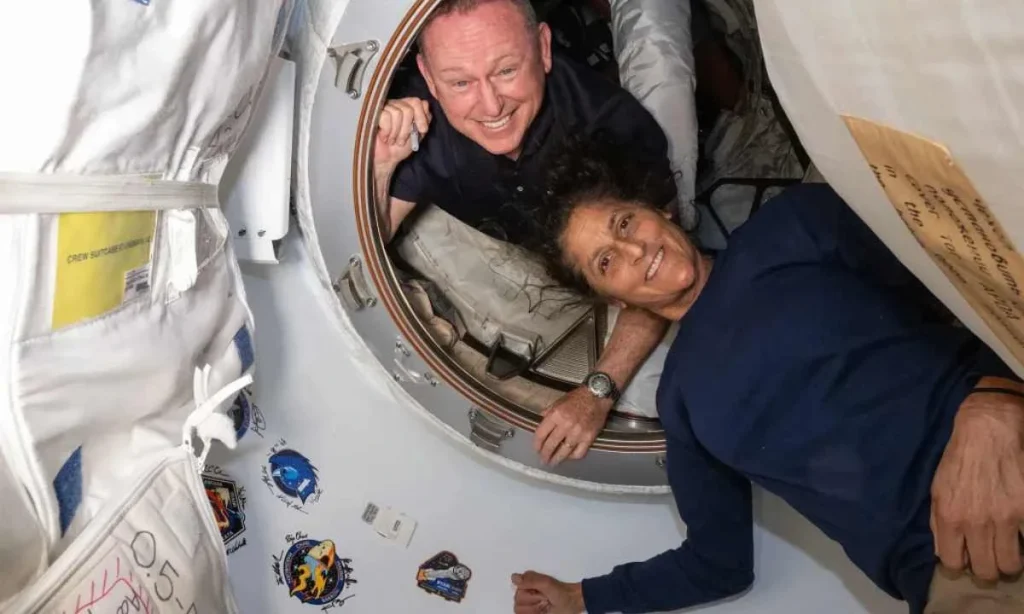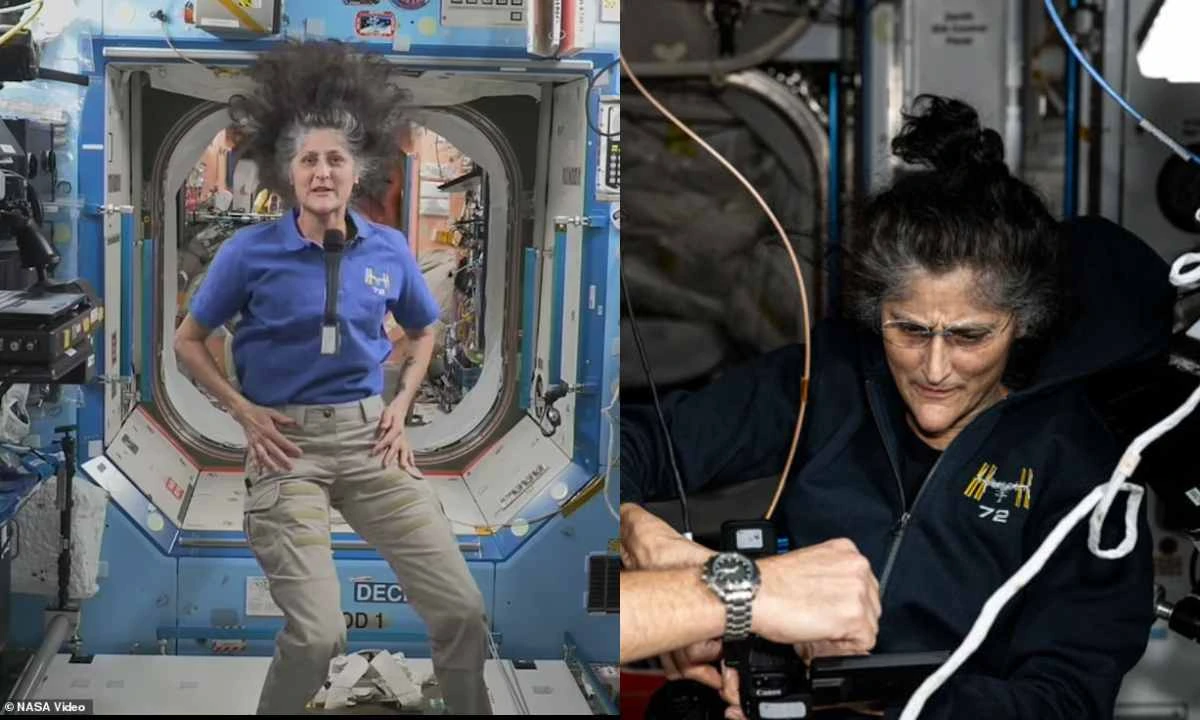Stranded NASA Astronaut Finally Breaks Silence About The Frightening Weight Loss!
When astronauts Sunita “Suni” Williams and Barry “Butch” Wilmore launched toward the International Space Station (ISS) on June 5, 2024. They only expected to stay for 8 days on the mission, aboard Boeing’s Starliner spacecraft. However, things didn’t go as planned. Technical issues with the Starliner turned their short mission into an indefinite stay. Now the two astronauts have been in space for over five months and plan to return to Earth in February 2025.
Recently released photos of Williams, now 59, have sparked concern among the public. The images show her looking significantly thinner. She seems to have sunken cheeks and a lean frame that has drawn attention to the physical toll of prolonged space missions. A NASA employee involved in the mission shared that “the pounds have melted off her and she’s now skin and bones.” Following the health concerns, Sunita Williams has spoken about her weight loss. Let’s have a look at what she has to say and what NASA has said about the controversy.
The Starliner Malfunction and Prolonged Stay on the ISS
Williams and Wilmore’s journey to space began on June 5, when they launched aboard Boeing’s Starliner, marking the spacecraft’s first crewed mission to the ISS. Initially, they were expected to return to Earth on June 13. However, technical problems quickly derailed those plans. The Starliner experienced helium leaks and encountered potential debris threats, which led NASA to deem the capsule unsafe for a return trip.
To ensure their safety, NASA postponed the return date, now set for February 2025, when Williams, Wilmore, and the astronauts from SpaceX’s Crew-9 mission will travel back to Earth together aboard SpaceX’s Crew Dragon capsule. This delay extends Williams and Wilmore’s stay from a planned 10 days to nearly 8 or 9 months in space.

Health Concerns for Sunita Williams Amid Extended Space Mission
Over the months, Williams has faced some concerning physical effects from the prolonged mission, especially in the form of weight loss. Photos reveal her gaunt appearance, and reports have emerged about her struggles to maintain weight. A NASA employee involved in the mission shared that “the pounds have melted off her and she’s now skin and bones.” According to this source, reversing her weight loss has become a priority for NASA, as her current health raises concerns for her remaining months on the ISS.

“The pounds have melted off her and she’s now skin and bones. So it’s a priority to help her stabilize the weight loss and hopefully reverse it.”
NASA employee who is directly involved in the mission and has attended multiple briefings.
Research shows that women, in particular, may experience more muscle loss during space missions. Williams’ weight changes could potentially have long-term effects, which NASA is closely monitoring. The agency has also noted that she has been “undergoing routine medical evaluations” to address these concerns.
Sunita Williams Responds
Williams herself has addressed the public’s concerns, downplaying the extent of her weight loss. In a recent statement, she explained, “My thighs are a little bit bigger, my butt is a little bit bigger. We do a lot of squats.” She clarified that she hasn’t experienced significant weight loss, stating, “I think there’s some rumors around that I am losing weight and stuff… No, I am actually right at the same amount.” Williams and Wilmore use a spring mass device to track their weight on the ISS, allowing her to confirm that her weight has not drastically changed.

The Science Behind Weight Loss and Health Risks in Space
Life in space affects the body in unique ways. Microgravity environments like the ISS can lead to muscle atrophy, bone density loss, and weight changes. Without the usual gravitational forces we experience on Earth, astronauts’ bodies adjust in ways that can lead to health complications. In addition, astronauts need a high-calorie diet to sustain their health, and meeting these needs in space can be challenging.
For Williams, NASA doctors are working to increase her daily caloric intake to stabilize her weight. According to sources, she might need to consume as much as 5,000 calories per day. This is significantly higher than the average caloric needs for women on Earth, which typically range between 1,600 and 2,400 calories daily. Williams reportedly began the mission at around 140 pounds, and maintaining her weight under these conditions has proven difficult.
To support her health, NASA has implemented routine medical checks and adjusted her exercise routines on the ISS. These measures are crucial in helping astronauts like Williams manage the physical challenges of long-term space missions.

Preparing for Return: NASA’s Plan and Future Safety Measures
NASA’s priority now is to bring Williams and Wilmore back to Earth safely. Their return is scheduled for February 2025 via SpaceX’s Crew-9 Dragon capsule. Until then, NASA continues to monitor their health and adapt their routines to manage the impacts of their extended mission.
Looking ahead, the unexpected issues with Starliner have prompted NASA to refine its safety protocols and evaluate the risks associated with new spacecraft. Missions like Williams and Wilmore’s highlight the need for ongoing research into the effects of prolonged space travel on human health.
Conclusion
The story of Sunita Williams’ extended stay on the ISS sheds light on the unique challenges astronauts face during space missions. Williams’ experience demonstrates the physical resilience required to endure the unexpected hardships of space exploration. Her weight fluctuations, though concerning, emphasize the commitment of astronauts to their missions, even when conditions change unexpectedly.
As space travel becomes more common, research on these effects will play a crucial role in creating safer missions. Williams and Wilmore’s journey reminds us of the incredible dedication and endurance required of astronauts, who venture into unknown conditions for the sake of discovery and advancement.
Also read,







